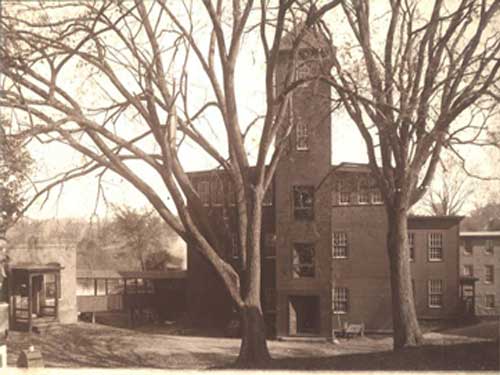A friend sent me the following, from Glastonbury Historical Society where he was docent, after reading my NYT article on Civil War underwear. (When I was researching the article, it took an effort to think of knitting as manufacturing, rather than my grandma making sweaters for us and our dolls.) Back then, manufacturers didn’t have to settle for sports stadiums–they had entire towns named after them.
In 1822, Fraray Hale and Samuel Welles organized a clothing and fulling mill known as Eagle Manufacturing Company. They built a mill on Salmon Brook near Hebron Avenue at the location of Mill Street and Addison Road for the production of woolen goods. In 1855, the plant was bought by the Glastenbury [sic] Knitting Company. Eagleville become known as Addison, named for Addison L. Clark, president of the new company. The village had its own post office. The factory made men’s shirts and good, warm underwear that didn’t shrink. After the knitting company closed, velvet was finished at Addison Mills.

The following is from the Addison Mills website:
The historic old Addison Mill dates back to the 19th century. It was built for a young entrepreneur named Addison Clark. The 23-year old Clark established the Glastenbury (yes, it was spelled that way) Knitting Company, which had 150 workers at its peak and did a booming business knitting “health underwear—shirts and drawers” for men. The employees during this time were of Polish, Hungarian and German descent. Many of these workers settled in the immediate neighborhood and helped build a remarkably diverse community in a rural area of Central Connecticut. The rich history of Addison Mill was eloquently captured by author W. Nystrom in his book “The Twine and the Thistle” written in 1970. Mr. Nystrom wrote in part:
The five o’clock mill whistle sounds
The work day is done and quiet abounds
A bird on a limb
Sings an evening hymn
And suppertime fullness is felt all around
The underwear produced by the company in the Civil War era gave rise to the term “union suit” for the one-piece undergarment that later became known as “long-johns.”